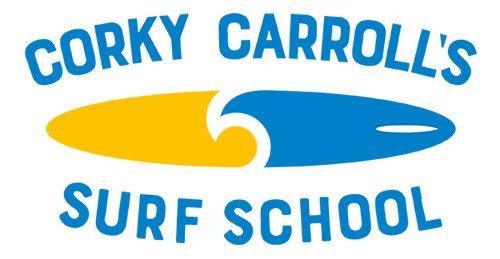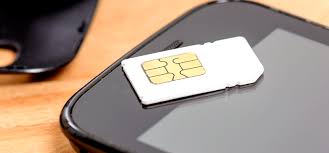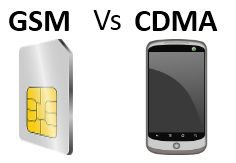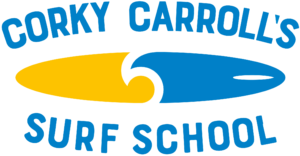Bolsa Chica State Beach is the best place to learn to surf in Huntington Beach. It is the best place to learn to surf in Orange County. And it is the best place to learn to surf in California. Heck, it might even be the best place to learn to surf in the entire world. This might all sound crazy, but a lot goes into making somewhere a contender for the best beginner surf spot. And Bolsa Chica has it all.
Below we’ll go into detail why Bolsa Chica hits all the right notes. But let’s be honest. Who has time to read all that. So in case you want to spend less time reading and more time surfing, here’s the highlights of why Bolsa Chica is the best place to learn surf in California.
- It is a soft, sandy bottomed beach break (the best break for beginners)
- It’s safe for all ages and ability levels
- Waves are typically smaller, and more gentle
- It is ideal for longboards (which every beginner should learn on)
- It gets waves year-round
- A nice gradual sandbar creates easier paddle outs and easier waves to catch
- It is rarely crowded so you won’t have to fight for waves
- It’s huge so there’s room to spread out and not get in the way of other surfers
- It’s centrally located and easily accessible
- It’s the home of Corky Carroll’s Surf School where you can take lessons to learn to surf
- It’s located in Surf City, USA
That’s the short of it.
Consistent waves combined with a gentle beach break, mild water temperatures year-round, easy access, a cool laid back scene, and small crowds make Bolsa Chica a paradise for learning to surf.
Still not convinced?
Let’s dive a little deeper and show why if you’re a beginner interested in surfing you can do no better than paddling out at Bolsa. To help make the case we’ll also breakdown what you should look for in any beginner surf surf spot, starting with…
Beginner Surf Spot Essential #1: Location
You know that saying — location, location, location? Well when it comes to surfing, whether you are a seasoned pro or just starting out, it’s the most important thing. It’s so important they made an entire movie about trying to find the perfect surfing location. Maybe you’ve heard of it. It’s called The Endless Summer, and it’s awesome.
In fact, everything else we will talk about is just an offshoot of location. Because not all surf spots are created equal. You need to consider so many different variables when picking the right location. The main ones being:
- What type of surf break is it?
- How big do the waves get?
- Do the waves break hard or is it more of a beginner break?
- When are the conditions best?
- How easy is it to access?
- How crowded are the waves?
- What facilities are nearby?
- Is there a blackball?
- Is it safe for beginners?
- On a scale of 1 to Kelly Slater how cool will I look in a selfie?
Know those and you’ll know if you’ve found the right place to surf.
Except that last one. That was a test. And rhetorical. Because everyone looks cool surfing.
The answer to the rest of those questions are ingrained in the DNA of local and experienced surfers. They just know where and when to go without thinking twice about it. Beginner surfers have to be a little more inquisitive.
Which is why you did a Google search and ended up here. So you’re off to a great start already. High five!
Why Bosla Chica is the Best Location for Beginners
Bolsa Chica State Beach is located in Huntington Beach on the north side of town. The beach extends three miles from Warner Avenue to Seapoint Avenue, running along the Pacific Coast Highway. It is probably best known for being connected to a super important ecological reserve, but it also just so happens to be an excellent surf spot.
Learn More About Bolsa Chica State Beach and Why Our Surf School Calls it Home
More importantly, Bolsa Chica is an excellent surf spot for beginners. Why? Because it is safe. As in the waves break soft and slow year-round, and there’s little risk of getting thrown against rocks or pier pylons or other surfers. The water temperatures are warm in the summer and mild in the winter, allowing for year-round surfing. There is no blackball. There are awesome facilities all over the place, like free showers and bathrooms. It’s super mellow and disconnected from the crazy crowds of other beaches. There are lifeguard towers every hundred yards and it even has its own dedicated lifeguard headquarters. And there is a ridiculous amount of parking right on the beach.
Also, Bolsa Chica is really, really easy to get to. It is about 15 minutes from the 405 freeway and right on the PCH. We’d go so far as to say it is one of the most accessible surf spots in California. Just take a look at the directions to our surf school to see how easy it is to reach.
As far as location goes it’s hard to beat Bolsa Chica. (Don’t believe us? Just ask the man himself — Corky Carroll — who ranked Bolsa Chica as one of the best beaches to surf for beginners.) And this is just the tip of the iceberg.
Beginner Surf Spot Essential #2: Beach Breaks
Wanna know what surfer’s do more than surf? Look at surf.
A few years back Matt Warshaw wrote one of the most epic books ever written about surfing. It’s called The History of Surfing. And you know what he chose as the cover to his magnum opus? Not a photo of Kelly Slater ripping it. Not a photo of Duke Kahanamoku wave sliding. Not even a photo of a surfboard or even someone surfing. Nope. It’s a photo of two guys laying on the beach looking at a wave.
Because that’s what surfers do.
They look at waves. And by looking at the waves they learn the conditions. They see how the waves are forming so they can determine the best way to ride them.
How waves are shaped is largely determined by what type of surf break that spot is. Specifically, whether it is a beach, point or reef break. We’ll discuss exactly what those are in another post, but as a beginner you should surf at beach breaks.
A beach break is a surf spot with a sandy bottom. This means there are practically no rocks and if you hit the bottom it won’t hurt you (or your board) as much. They also provide more available space for surfing, as they let surfers spread out across the lineup. Point breaks on the other hand, for example, typically have a smaller “take off spot” so surfers tend to crowd together more closely vying for the same wave, creating a more competitive environment.
So when learning to surf you want to find a beach break. Which is exactly the type of break Bolsa Chica is.
Why Bolsa Chica is a Great Beach Break
Bolsa Chica is a perfect beach break for beginners. Its waves are typically slow and small, that break softly to create an easier face to ride. As a beginner you want small waves. Large, hard crashing waves are more powerful requiring you to react fast, paddle quick, and pop up. None of which comes naturally to beginners.
These gentle crumbling waves are caused by the soft sand bottom at Bolsa Chica and its gradual incline towards shore. The bottom shelf at Bolsa Chica State Beach stays shallower father out than other beaches. This creates calm waters and gentle waves. When a swell arriving from far out at sea hits a steep shelf, it crashes hard. As it does around the Huntington Beach pier. When it moves across a shallow shelf like the one at Bolsa Chica, it slowly topples over.
Gentle waves and a soft sand bottom also make wiping out not a big deal. Which you will do a lot when learning. Don’t worry. Everyone does it. That’s why they write songs about it. But if you’re going to wipe out why not land on soft sand.
Know Your Surf Zone
Another great thing about a gentle beach break like Bolsa Chica is that it allows you learn how to surf on both the outside and inside. These are the two wave zones of a surf spot.
The Inside
Inside waves are best for first time surfers. These are smaller waves closer to shore. They consist mostly of white wash, and are easier to get into and ride.
The Outside
Outside waves are where swells initially break. They are better suited to surfing as they are typically longer, bigger and have cleaner faces than inside waves.
Outside waves are often difficult for beginners, but at Bolsa Chica they break slow and complement the inside nicely. In this regard, Bolsa Chica creates an ideal environment for progressing. A beginner can start on the inside and then quickly and seamlessly move to the outside.
Board Size Matters
The type of break at a surf spot dictates what type of board you should ride there. A beach break like Bolsa Chica, with slow, peeling waves is ideal for longboarding. Which is great, because beginners should learn to surf on longboards. (More specifically we recommend a 9ft wide soft top.)
If you were to go down the road a few miles to the Huntington Beach pier you would see a bunch of talented surfers all riding shortboards. That is because the pier’s waves are better suited for shorter boards. When you enter Bolsa Chica you will notice a majority of longboards. As you might have guessed, that’s because Bolsa Chica is a longboarding surf spot.
And a perk of hanging out at a longboarding suf spot is they typically have a more laid back and welcoming scene than shortboard surf spots. Which brings us to…
Beginner Surf Spot Essential #3: The Surf Scene
When it comes to the surf scene of a surf spot there are two aspects:
- What’s happening in the water
- What’s happening on land
If you are going to be learn to surf you might as well have the best experience possible. And there is no better place to experience surfing than Huntington Beach.
HB has a long and storied history with surfing dating all the way back to the early 1900s. Ever since it has been an epicenter for surf culture. Downtown HB is dubbed “the Times Square of Surfing.” It is home to both the Surfing Walk of Fame and Surfers’ Hall of Fame, and International Surf Museum. Some of the biggest surf companies are headquartered there as well including Quicksilver and Surfline — the end all, be all source for surf condition reporting.
That’s what is happening on land near Bolsa Chica. It’s an epic surf scene that makes it impossible not to get stoked on surfing.
In the water, Huntington Beach is one of the most consistent wave zones in California. (They don’t call it “Surf City, USA” for nothing.) There is rarely a time when the surf isn’t pumping. It might not always produce perfectly glassy overhead peaks, but it won’t be flat. In other words, it is a rideable wave bonanza every day of the week in Huntington Beach. Bolsa Chica is no exception.
This is great news for beginners because the most important thing for someone starting out is to try to catch as many waves as possible. Experienced surfers can be more selective, but novices want to get as many opportunities as possible to progress. And you won’t get that if you’re just floating around looking at seagulls flying by.
But with all those waves come the crowds.
When you have an awesome surf scene on land and an abundance of waves in the water you’re going to attract the masses. Sometimes to the chagrin of locals, whose longtime favorite surf spots are getting overrun. In these areas locals are not always keen to see a first time surfer paddle out.
Beginners require more room to surf. Understandably, they have less control on the board. So when picking a place to learn to surf it’s important to take into consideration how crowded the water will be. It’s better, and safer, when there is more room available to learn.
And that’s where Bolsa Chica State Beach really shines as the best beginner surf spot.
Why Bolsa Chica Has a Rad Surf Scene
Check out some of the pages that pop up when searching for “best places to learn to surf” and “best beginner surf spots” in California. You will likely see Cowell’s in Santa Cruz, Sunset Cliffs in San Diego, Surfrider in Malibu, Old Man’s in San Onofre, and a few other of the greatest hits. But one place you will never hear about is Bolsa Chica State Beach in Huntington Beach. And that’s a good thing.
Bolsa Chica State Beach is a hidden gem.
It is close enough to downtown HB to take advantage of its amazing surf scene and culture, while avoiding the crowds in the water.
We’re not bashing those other beginner surf spots. They are amazing. Even if you’re not a beginner they are really fun. If you ever have the opportunity to hit up Malibu or Old Man’s please do yourself a favor and go. Even if you don’t get in the water, they are rad surf scene’s worth experiencing.
However, they are not the best for learning to surf. Or at least Bolsa Chica is better.
It’s one thing to be a famous surf spot with an iconic history, but it’s another to be a practical place for learning to surf that is safe, easily accessible and provides as much fun as possible. And then there’s the crowds.
Less Crowds Equals More Surfing
Probably the most notable thing about these famous beginner surf spots is that they can get really crowded. Because if everyone writes about it, they will come. Luckily Bolsa Chica does not have that problem. There’s only one article espousing how wonderful a place Bolsa Chica is and you’re currently reading it. High five!
Being a California state-owned beach you have to pay to park at Bolsa Chica. It costs $15. But that’s actually a really good thing. In this regard it’s no different than Doheny or San Onofre, both of which are state beaches. But unlike those locations, whose reputations attract surfers by the volkswagen-full from all over the world, Bolsa Chica is far less popular. And because of the entrance fee the crowds are a lot smaller than other locales. Seriously, we’re talking like a tenth of the crowd you’ll see other places. Drive up the road during the summer to other surf spots in Huntington Beach and you’ll see what we mean.
When there’s that many people in the water it is hard to have fun. And that’s the first and last thing you should care about when picking a surf spot to learn.
Welcome to the Funnest Place to Learn to Surf in California
When all is said and done the most important question to ask is:
- Will I have fun surfing there?
That’s what it all boils down to. Whether you are looking to take up surfing seriously, just visiting and want to give it a try for the first time, or been surfing your entire life, it is all about having fun.
If you’re a beginner, Bolsa Chica will provide. For every reason listed above and many more. And that is why it is the best place to learn to surf in California.
But you don’t have to take our word for it. Swing on by anytime and we’ll show you. Just don’t tell anyone else about it. We’re trying to keep it a secret.



